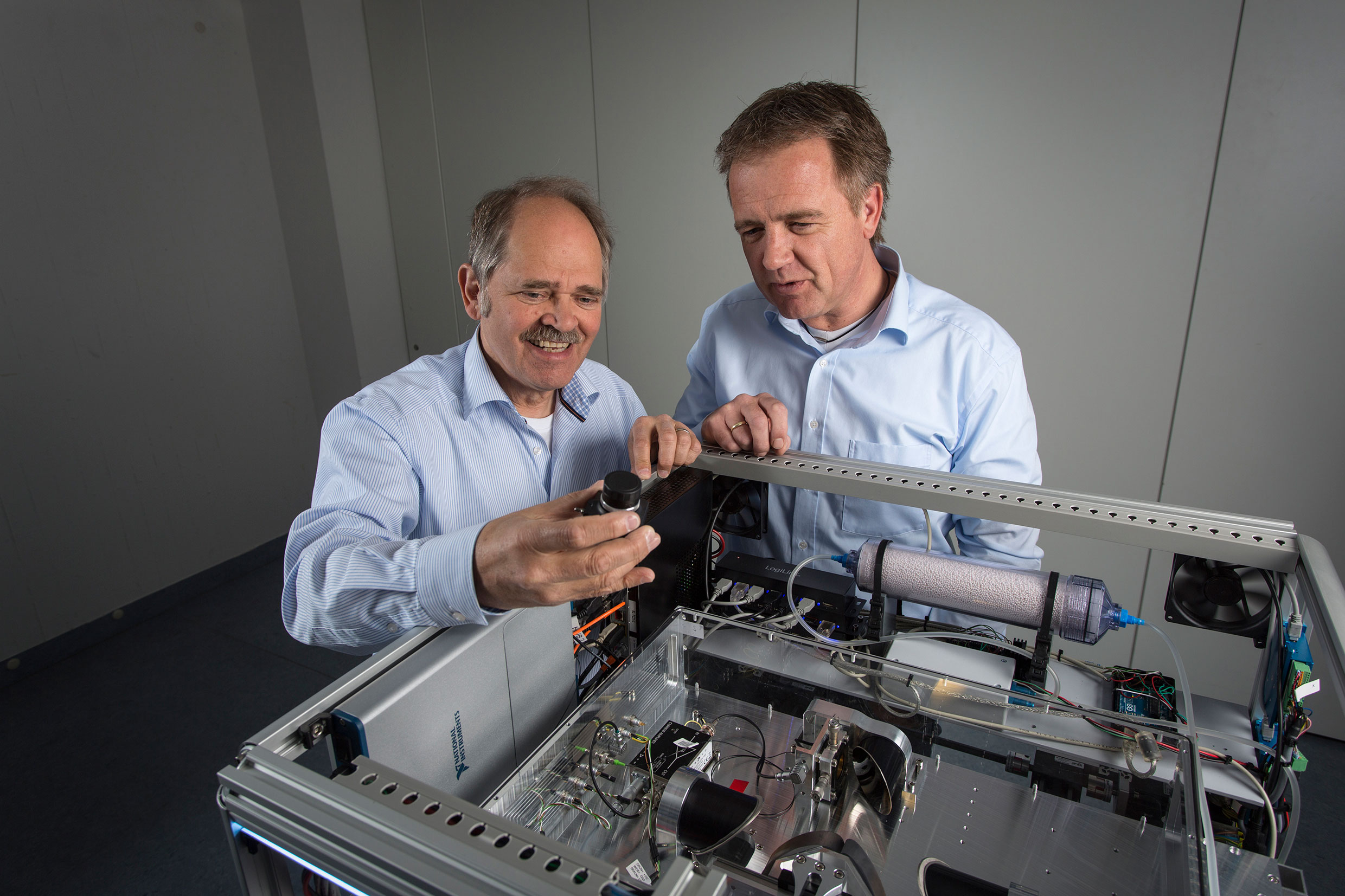Inspecting letters with terahertz waves
Is it a harmless parcel or a bomb, an innocent letter or a drug shipment? A new terahertz scanner is capable of detecting illicit drugs and explosives sent by post without having to open suspicious packages or envelopes.

Alert at Schloss Bellevue. A suspicious letter addressed to German President Joachim Gauck has been detected, which might contain a bomb. Not willing to take any risks, the bomb squad is called out to destroy the package. Later investigations revealed that the envelope did not contain any explosives, but better safe than sorry. A year ago, this event created turmoil in the mail sorting office in Berlin, because at the time there was no safe and simple way of reliably detecting the presence of explosives or drugs in letters and small packets. A new solution is offered by the terahertz scanner developed by researchers at the Fraunhofer Institute for Physical Measurement Techniques IPM in Kaiserslautern in collaboration with Hübner GmbH & Co. KG in Kassel. Their T-COGNITION system is capable of detecting and identifying the hidden content of suspicious packages or envelopes without having to open them. One of this year’s Joseph von Fraunhofer prizes was awarded to Prof. Dr. René Beigang of Fraunhofer IPM and Dipl.-Ing. Thorsten Sprenger, Head of Public Security and Photonics at Hübner, for their work on the terahertz scanner for the secure identification of hazardous materials and illicit drugs in postal consignments.
But why did the scientists choose to use terahertz waves for this application? Professor René Beigang explains: “The terahertz range lies midway between microwave and infrared in the electromagnetic spectrum, and thus combines the advantages of both.” Like microwaves, these low-energy frequencies can easily penetrate paper, wood, lightweight fabrics, plastics, and ceramics. Moreover, terahertz waves generate characteristic spectra depending on the type of material they travel through, which can be analyzed quickly using intelligent software. A further significant advantage is that terahertz waves are non-ionizing and therefore safe to use in an unprotected environment, unlike X-rays. This makes the technology an interesting option for use in mail scanners.
Scaling up terahertz technology for industrial applications
Terahertz technology is still in its infancy, and until now it has found relatively few applications. The department of Material Characterization and Testing at the University of Kaiserslautern, sponsored jointly by Fraunhofer IPM and the Land of Rheinland-Pfalz, hopes to change this situation. “Our goal is to scale up terahertz technology and extend its range of use to include security applications,” says Beigang. The engineers at Hübner were among the first to recognize the potential of the Fraunhofer researchers’ work. The company’s traditional line of business is manufacturing key components for the transportation industry (e.g. rail vehicles, buses, airport technology, automotive). A new division for public security was added in 2006, when the company first started to look for cooperation partners. The mail scanner project was launched four years later, based on previous joint development projects. In the meantime, the company has brought its T-COGNITION solution onto the market.
This is how the mail scanner works. Suspicious envelopes and packages are fed into the scanner on a retractable tray. They are then exposed to terahertz waves which are absorbed at different frequencies within the spectral range depending on the substance they travel through (characteristic absorption properties). Detectors at the output of the scanner record the transmitted wavelengths. “Within a few seconds, T-COGNITION produces a spectroscopic fingerprint that allows the detected hazardous material to be compared with database samples and definitively identified,” says Thorsten Sprenger.
The system triggers an alarm if the consignment contains explosives or illicit drugs.The system is capable of examining the content of postal items up to C4 format with a thickness of up to two centimeters. Sprenger says: “It is the ideal mailroom solution for prisons, customs offices, government agencies, company headquarters, and embassies or consulates, because it helps to improve security and protect human lives.”
T-COGNITION recently received the PrismAward, the equivalent of an Oscar in the photonics world, at the Photonics West 2014 international congress in San Francisco.